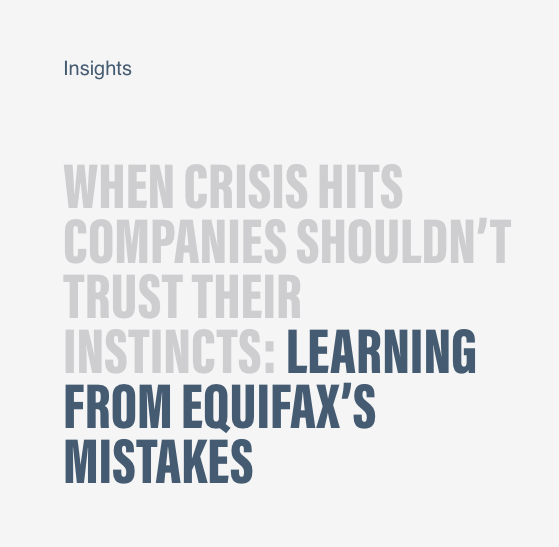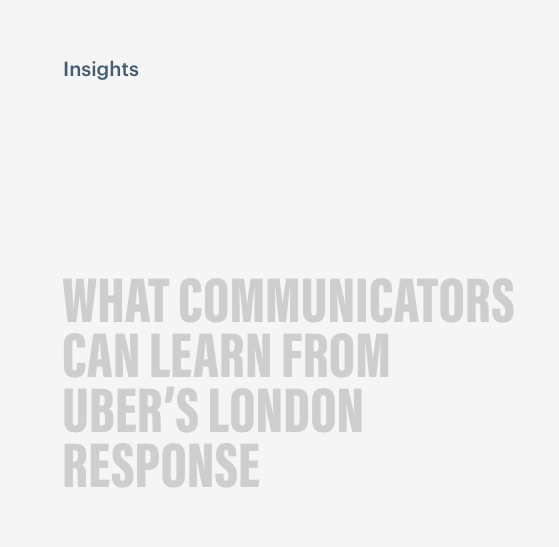Listening to your audience with active empathy
We often hear clients say with conviction, “Finding the language to represent our brand should be fast and straightforward, because we offer ‘X’. If our audience only knew that we offered ‘X,’ they’ll want to buy it. But to be successful, messaging relies on getting your audience not just to think what you want them to think but to feel what you need them to feel. That starts by engaging empathically with your audience.
The challenge is that, while we have a natural ability to empathize with people who are like us, most of the time we’re communicating with people who aren’t just like us. Which is where active empathy comes in. Active empathy is the practice of understanding exactly where your audience is coming from. A company that historically got a lot of credit for their acts of empathy in branding and marketing is Apple. But what they accomplished is even more impressive when we think back to the launch of the original iMac. The leap of empathy required for a group of software engineers to design a product for people who felt distrustful and wary of software was immense. Apple’s engineers understood a fundamental paradox: “I love code. How do I make computing accessible for someone who hates it?”
This is why to communicate successfully with your audience it’s vital to start by asking, which emotions are they bringing to the conversation? There are the core emotions, notably love, fear, anger, joy, sadness, disgust and lust. These are all considered ‘productive’ emotions, because even when dominated by one of them, we are capable of action. The secondary emotions, which arise when we are trying not to feel one of the core emotions, include shame, anxiety, and guilt. These lead to paralysis. Most importantly, you cannot convert someone to your perspective when they are in a secondary emotion. Show a smoker a picture of smoking-induced amputations… and they’ll get so anxious they’ll want a cigarette. If you inspire them with empowering language about their ability to quite and make them feel a belief in themselves instead, they’re more likely to invest in a weaning product.
This sense of belief that comes with empowering language doesn’t just live in product adoption. We once worked on a project to increase self-care for people with Type 2 diabetes. The project had been operating under the premise that people weren’t taking care of their diet and exercise because they were too busy. So, the organization was offering 15-minute exercise routines and 15-minute recipes. But it wasn’t making a dent in the hospitalization rate for the target population.
Instead, when we asked a research participant what feeling was getting in the way of making better choices, she said, “Shame. Embarrassment. On holidays my whole family gathers, and I just want to have a piece of cake and I don’t want to be explaining to my grandkids why I can’t eat with them.”
Based on that insight, we started testing different messaging and found that by shifting the conversation away from time management and onto taking control, we were creating the feeling these patients wanted, which was empowerment around their lives and their health. “If you follow these guidelines and take your medicine every day, you will be able to choose opportunities to have these other treats safely.”
To practice active empathy start by asking yourself, why does your audience do what they do? Why do they believe what they believe? You’re going to create messaging that’s very different than if you start just by asking, what do I want to say?
Because when was the last time you changed somebody’s mind by telling them that they were wrong? It’s an ineffective strategy. It makes people feel uncomfortable. So, how do you flip that around to communicate the same message but in a way that makes them feel the emotions that start moving them in the direction that you want?
In Arizona, Republicans and Democrats were at a contentious impasse on education policy. Democrats felt that the system desperately needed increased funding to support teachers and infrastructure. Republicans were wary of putting more money into a system that they felt was broken. And negative political messaging that relies on making people feel shame, fear, or guilt keeps people at home and at odds with one another. When we dissected the language, instead of making the issue about teachers vs fiscal responsibility, the opportunity proved to be talking about the one part of the system that resonated emotionally with both sides; students in the classroom. By focusing on something both sides cared deeply about and could agree on, people were much more willing to come to the table and discuss the topic in ways that they hadn’t before and soon legislation was agreed on and enacted.
Pushing yourself to understand and respect where your audience is starting the conversation from emotionally will always lead to a more productive conversation, stronger sales, and better outcomes for everyone.









